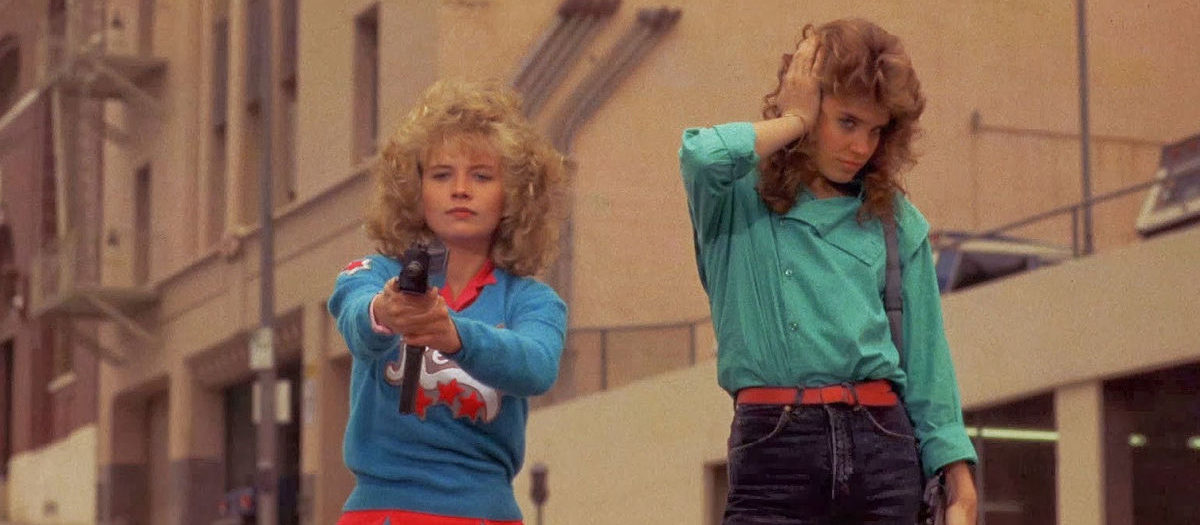
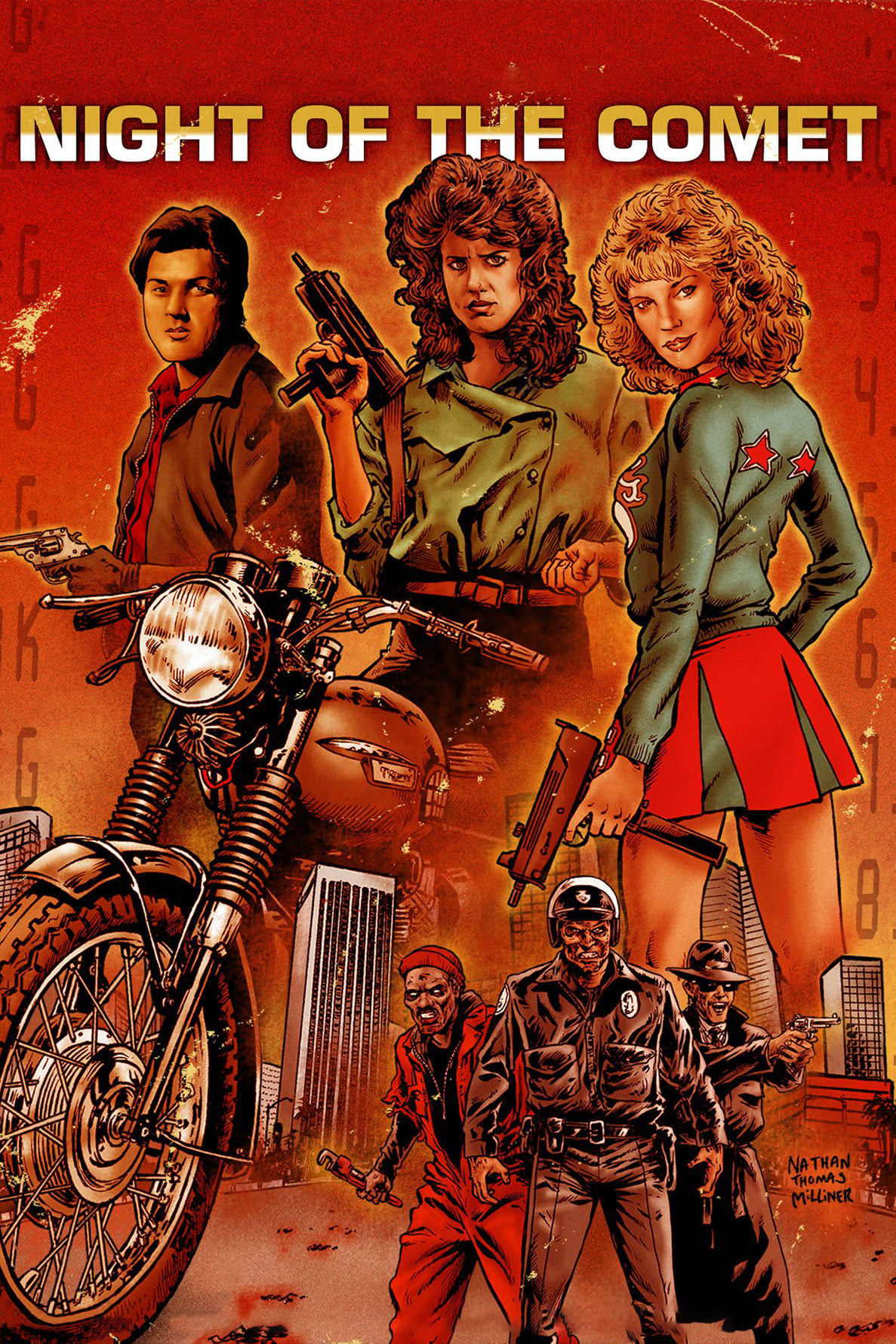
“The MAC-10 submachine gun was practically designed for housewives.”
A crossbreed of teenage romance, doomsday science fiction, and zombie horror comedy, Night of the Comet is a sugar-sweet time capsule of ‘80s sensibilities as well as a shameless homage to genre classics. Shot under the working title Teenage Mutant Horror Comet Zombies, there was never a question of writer-director Thom Eberhardt’s pet project being understood as anything other than a B grade send up of silly ‘50s sci-fi films. Aesthetically memorable, good natured, and gloriously campy, it’s rollicking good fun, complemented by several odd excursions that make it a favorite among the cult crowd. It’s a surprisingly economical little film, mixing its pastiche and light social satire into a delightful, tongue-in-cheek, neon-soaked romp through a knowingly derivative apocalyptic scenario. Though almost every individual element can be traced back to some other work, whether that be the zombie films of Romero or the exploitation sci-fi cinema of Corman, Night of the Comet achieves a singular texture by having its feather-haired, army brat Valley girls smirk their way through the end of the world like it’s a normal weekend adventure.
The titular comet is set to pass by the earth for the first time since the dinosaurs roamed its surface and will briefly envelope the little blue planet in its cosmic tail. Everyone has plans to watch the show and celebrate the invigorating moment, but Regina (Catherine Mary Stewart) finds herself stuck with the late shift at the movie theater—although she spends more time racking up high scores in the arcade, pirating film reels, and canoodling with her boyfriend in the projection booth than actually working. The next morning, after a breakfast of popcorn and Twizzlers, she quickly discovers that anyone who had not spent the night in a steel enclosure has either been turned into a pile of red dust or now prowls the streets with rotting skin and an appetite for human flesh. The entirety of downtown L.A. is choked in a hazy red smog. Reggie’s boyfriend gets beaten to death by a pipe-wrench-wielding zombie and then she escapes on his motorcycle, making her way home to find that her sister, Samantha (Kelli Maroney), had spent the night in the family’s backyard shed after getting into a fistfight with the girls’ stepmother and is thus unharmed (no explanation for why the shed is composed of steel—maybe it was tin?).
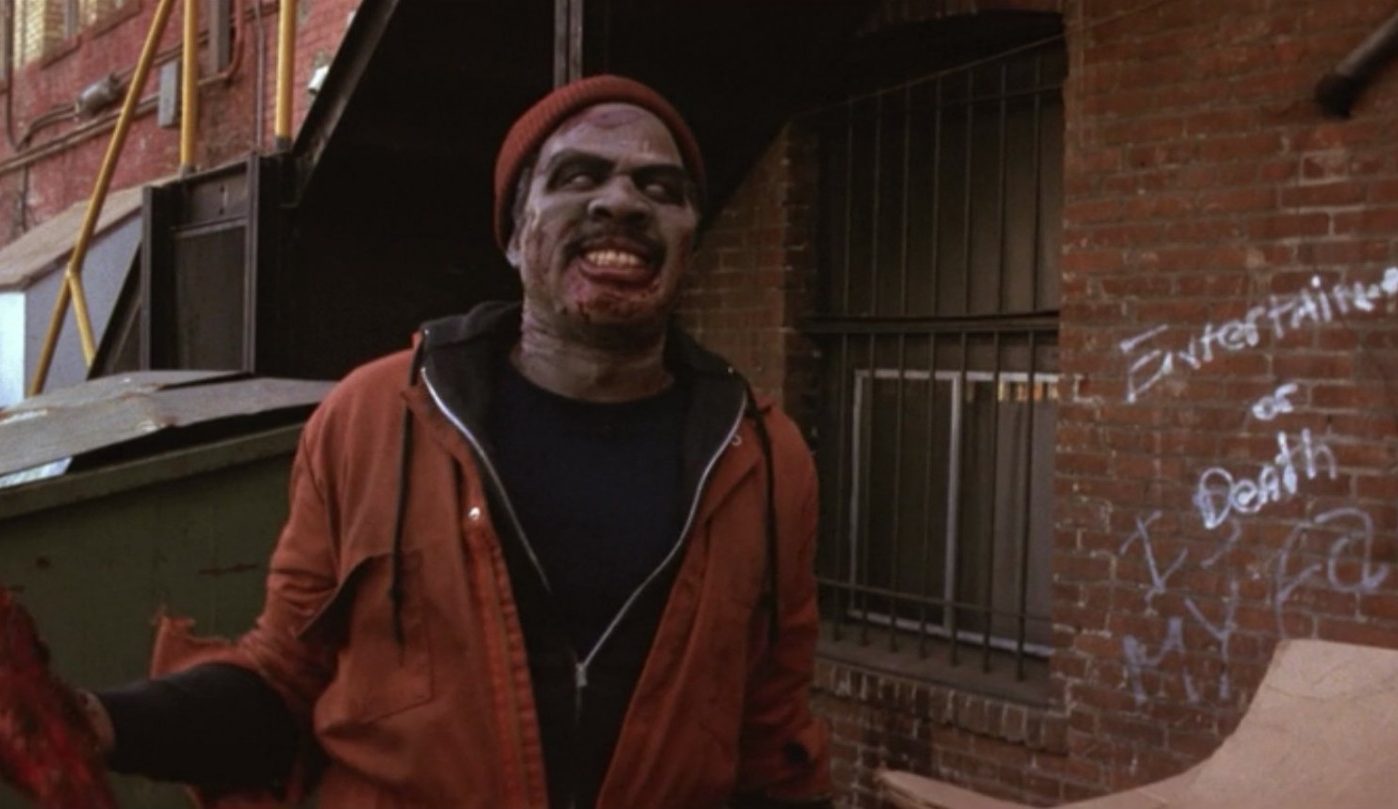
After Reggie convinces her sister of the reality of the situation, the girls head to the local radio station where they meet big rig driver Hector (Robert Beltran), who survived by sleeping in the back of his truck. The radio broadcast that had lured them in was pre-recorded, so Samantha speaks live on the air, catching the attention of a government cell of doomsday preppers (led by cult legend Mary Woronov and character actor Geoffrey Lewis) who had been living in an underground bunker in the desert. Ostensibly benevolent, our unlikely heroines initially trust their fates to this group of professional looking scientists; but soon they come to realize that the research team is committing heinous crimes against humanity by harvesting the blood of children to prolong their own lives. (Their fatal mistake after all that prepping was to leave the ventilation system running during the comet’s passing, thus afflicting themselves with a slower-acting version of the zombie/dust sickness.) The girls rescue the children and, along with Hector and a highly skilled arcade gamer who arrives on the scene out of nowhere, accept the responsibility of restarting civilization.
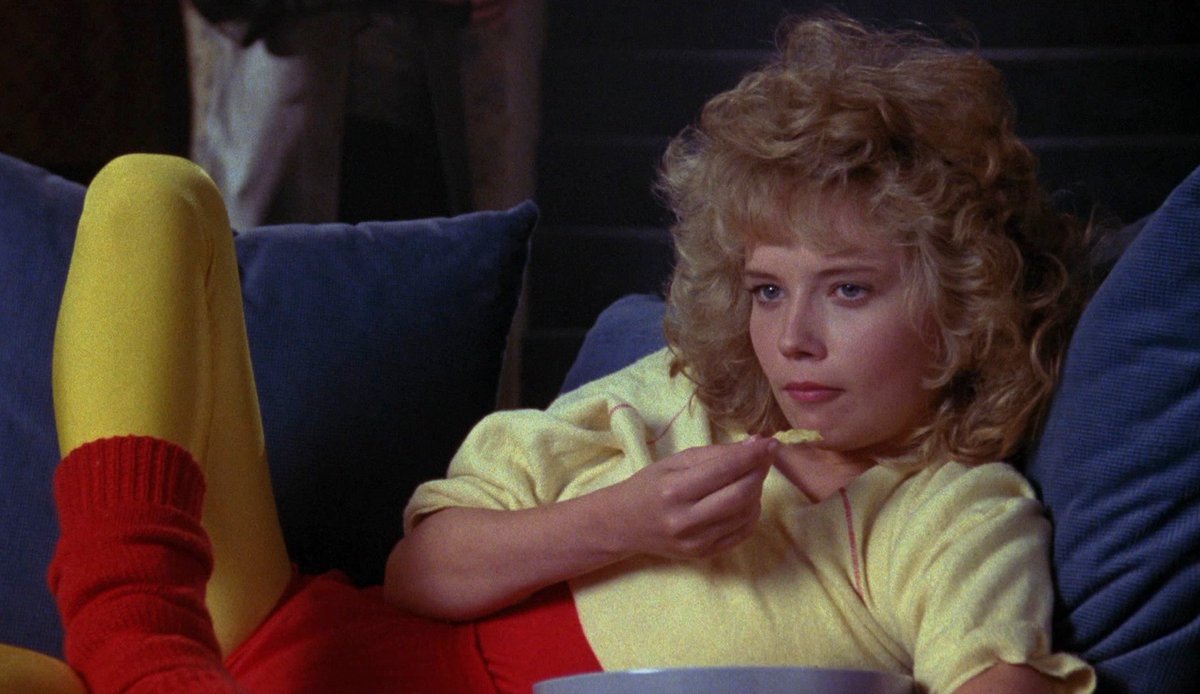
The true calling card of Night of the Comet is the peculiar juxtaposition achieved by thrusting two brightly clad, bubblegum-chomping teens into a zombie apocalypse and acting like that’s not weird at all, but simply a slightly novel venue for the girls to frolic around in. Sam cries a single time over a dustified crush, but other than that, these sisters are unfazed by the death and destruction that they’ve witnessed. And even though they’re stereotypically concerned with boys and clothes and sex appeal and high school dances, they’re also trained in firearms and hand-to-hand combat, making their hormone-fueled endeavors all the more hilarious. This odd stylistic concoction is typified in an early scene where Hector describes watching in horror as a girl was torn limb from limb while exuberant ‘80s pop music nearly drowns out his words. A little while later, when Hector leaves to verify that his entire family has died, the sisters head to the mall,1 where a montage of dancing and shopping set to Cyndi Lauper’s “Girls Just Wanna Have Fun” offers a bold diversion while doubling as a little Romero-esque jab at consumer culture. (Other subtle digs include the automated traffic lights, sprinklers, and pre-recorded radio transmissions continuing to function even in the absence of a populace.) During their shopping spree, they’re accosted by a group of thugs with machine guns, and Reggie eagerly returns fire while Sam tosses expensive women’s footwear at them.
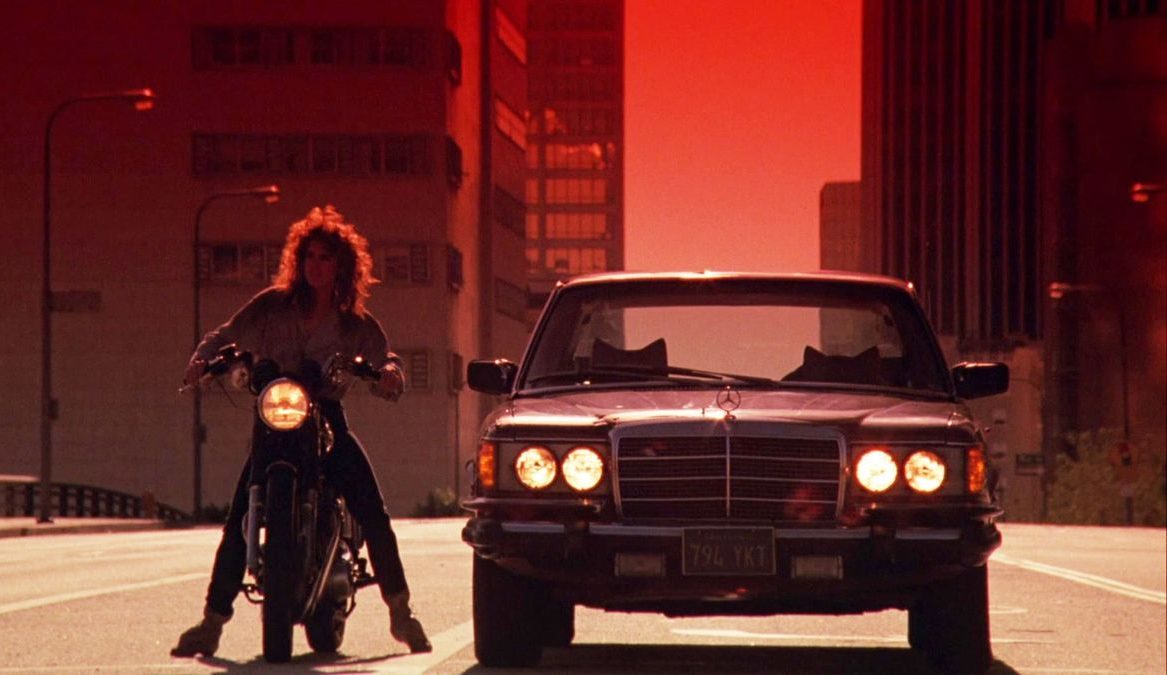
The tonal shifts may throw some people off as the film readily jumps from screaming horror to cheesy romance to goofy comedy. But these potentially jarring transitions are masked by game acting from the two leads, witty dialogue, pervasive ‘80s music, and the joyous spirit of the production. Indeed, the entire film is forcefully uplifted by a jubilant sense of spontaneity and low budget fun. Thom Eberhardt gave his cast the freedom to improvise, leading to a memorable moment when Sam’s MAC-10 jams during target practice. “See, this is the problem with these things. Daddy would have gotten us Uzis.” The practical sets hold serve unbelievably well all these years later, considering the film’s budget. From the movie theater to the radio station to the shopping mall to the underground bunker, the film has a bold style wherever you look. And that’s not even considering the memorable shots of deserted L.A. streets, captured in the early morning hours by the production team in between traffic signals. The wall-to-wall pop music helps to smooth out the genre shifts and imbue the entire production with a party-like atmosphere.
Night of the Comet flawlessly accomplishes what it sets out to do, reverently sending up an older style of horror film by dressing it up in modern style and waggishly waltzing through a zombie apocalypse. If Eberhardt had inched too much closer to serious melodrama, his film might have failed; but in aiming for lighthearted comedy and cheesy fun, he produced a gem of camp horror.
1. The same mall can be seen in Valley Girl, Chopping Mall, and Fast Times at Ridgemont High.
I want to to thank you for your time for this wonderful read!!